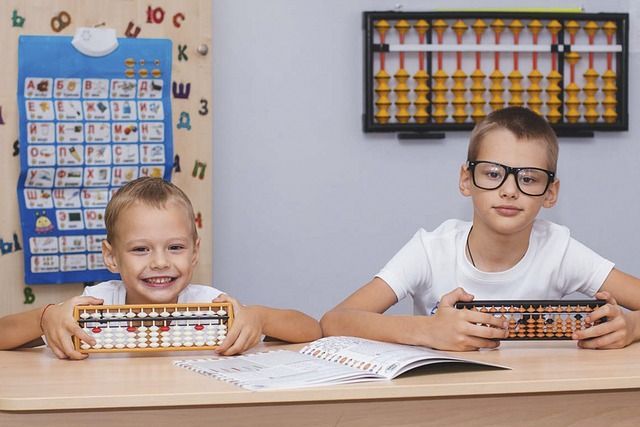7 Easy Hacks for Addressing Low Confidence in Kids
Some kids doubt themselves before they even try. They say, “I can’t” or “I’m not good enough.” That’s the heavy weight of low self-confidence, and it can hold them back from shining. Addressing low self-confidence in kids isn’t just about cheering them up—it’s about giving them tools, support, and real wins that prove they can succeed. When we step in with patience and guidance, we help children thrive in school, with friends, and in life.
What You Will Need
Addressing low self-confidence in kids takes more than good intentions. You need tools, patience, and a plan. When you’re prepared, you create a safe space that helps children thrive and grow stronger every day.
Here are the essentials to get started:
- Basic knowledge of child growth – Understanding how kids develop helps you notice when something is off. You’ll see the difference between normal struggles and real signs of low self-confidence.
- Ways to talk and connect – Books, simple questions, and open conversations build trust. These tools help kids share what’s on their mind.
- Encouragement tools – Sticker charts, journals, or small rewards make progress visible. Kids feel proud when they can see how far they’ve come.
- Chances to practice – Sports, clubs, and group classes give kids real-world places to try new things and gain confidence.
- Professional support – Sometimes you need backup. Counselors, teachers, or child specialists can give guidance when challenges run deep.
Gathering these resources sets the stage for real progress. When you’re ready, kids feel it—and that’s the first big step to building their confidence.
Want more practical tips on how to help children thrive? Check out this guide on building self-confidence in kids
Step 1: Understand Low Self-Confidence in Children
Before you can help children thrive, you need to spot the signs of low self-confidence. Every child is different, but there are clear clues when they’re struggling with how they see themselves.
Spot the Signs
Kids with low self-confidence may:
- Avoid new activities
- Put themselves down often
- Stay quiet or pull back from friends
- Worry too much about failing
These aren’t just shy moments. They’re signals that a child needs extra support.
Look at What’s Behind It
Low confidence doesn’t happen for no reason. It can come from:
- Pressure at school
- Trouble with friends
- Stress at home
- Past failures or setbacks
When you understand the “why,” you can give the right kind of help instead of guessing.
Remember Development Stages
Kids grow in steps. What’s tough for a six-year-old may not faze a ten-year-old. Knowing what’s normal for each age helps you set fair expectations and not push too hard too soon.
By addressing low self-confidence in kids early, you make space for growth before the problem grows bigger.
For more insight on spotting struggles and guiding kids toward confidence, visit this self-confidence guide for parents and teachers
Step 2: Create a Supportive Environment
Kids grow stronger when they feel safe, loved, and understood. If you want to help children thrive, start by shaping the world around them. A steady, caring environment makes a huge difference when addressing low self-confidence in kids.
Build Trust Through Talk
Let kids speak without fear of being judged. Listen closely, nod, and repeat back what they say so they know you understand. When their voice matters at home, they’ll feel braver outside of it.
Show Confidence Yourself
Children copy what they see. If you treat yourself with respect and laugh off mistakes, they’ll learn to do the same. Your example shows them that messing up isn’t the end—it’s part of learning.
Keep Things Steady
Clear routines and fair rules help kids feel secure. When they know what to expect, they can focus on growing instead of worrying. Stability gives them the courage to take new steps.
By shaping a steady environment filled with kindness and respect, you give kids the foundation they need to build real confidence.
Step 3: Encourage Positive Self-Talk and Mindset
What kids say to themselves matters. Their inner voice can lift them up or drag them down. Teaching positive self-talk is one of the best ways of addressing low self-confidence in kids and helping them thrive.
Show Them Self-Talk
Explain that the thoughts we repeat in our heads shape how we feel. Use simple examples, like turning “I can’t do this” into “I’ll give it a try.” When kids see how words affect feelings, they start to catch negative thoughts.
Flip the Negative
Help them change hurtful self-talk into kinder phrases. “I’m bad at this” can become “I’m learning.” This shift builds hope and makes hard tasks less scary.
Practice Affirmations
Pick short, powerful lines they can repeat every day:
- “I am strong.”
- “I can learn.”
- “I am enough.”
These mantras give kids courage when doubt creeps in.
The more children practice positive self-talk, the more natural it becomes. Over time, their inner voice will turn into a steady cheerleader.
Want more ways to build kids’ confidence? Read this guide for teachers and parents
Step 4: Foster Social Skills and Peer Relationships
Confidence doesn’t grow in a bubble. Kids need friends, teamwork, and chances to connect. Strong social skills are key when addressing low self-confidence in kids, because friendships and belonging help children thrive.
Teach the Basics
Simple habits like making eye contact, listening, and speaking kindly go a long way. These skills make kids feel more sure of themselves and make it easier to connect with others.
Build Empathy
Talk about how others might feel in different situations. When kids understand feelings besides their own, they become better friends and learn to handle conflicts with care.
Create Social Chances
Set up playdates, clubs, or group games where kids can practice. The more they interact in safe spaces, the more natural social skills will feel.
Friendships fuel confidence. Each positive interaction tells a child, “I belong,” and that belief helps them take on bigger challenges.
Step 5: Set Achievable Goals and Celebrate Efforts
Big goals can scare kids. Small, clear steps give them wins they can see and feel. This is one of the most effective ways of addressing low self-confidence in kids and helping children thrive.
Break It Down
Take a big task and split it into smaller steps. Each success builds momentum and shows kids that progress is possible.
Focus on Effort, Not Just Results
Praise hard work, practice, and persistence. When kids learn that trying matters as much as winning, they’re more willing to keep going.
Celebrate Progress
Mark achievements in special ways:
- A high five or hug
- A sticker on a chart
- A small reward
- A fun family activity
Celebrations remind kids that their efforts count. Over time, these little victories pile up and shape a strong sense of confidence.
Step 6: Provide Consistent Encouragement and Feedback
Kids bloom when they hear steady, honest support. The way you praise or guide them shapes how they see themselves. Consistent encouragement is one of the best tools for addressing low self-confidence in kids and helping children thrive.
Be Specific With Praise
Skip vague “good job” comments. Point out what they did well:
- “I like how you kept trying, even when it was tough.”
- “You worked hard on that drawing, and it shows.”
Specific praise feels real and builds true self-worth.
Give Helpful Feedback
Instead of pointing out what went wrong, show them how to improve. Kids learn mistakes aren’t failures—they’re steps forward. This mindset keeps them from giving up too soon.
Keep Your Tone Supportive
Your words matter, but so does your voice and body language. A calm tone and open posture tell kids they’re safe and valued, even when you’re correcting them.
Balanced praise and feedback help kids trust themselves. They’ll feel ready to take on new challenges with courage.
Step 7: Involve Professionals and Educational Resources
Sometimes kids need more than family support. When addressing low self-confidence in kids, outside help can give fresh tools and insight. Professionals and learning resources add strength to your efforts and help children thrive.
Turn to Experts
If low confidence lingers or grows worse, a child psychologist, counselor, or school support staff can step in. They bring strategies and guidance tailored to each child.
Use Books and Workbooks
Age-appropriate stories, activities, and guides give kids new ways to think about themselves. These resources also give parents simple tools they can use at home.
Join Groups and Workshops
Support groups or parent workshops connect families with others on the same path. Kids and adults both gain encouragement, ideas, and hope by sharing experiences.
Blending expert advice with home support creates the strongest safety net. When children see a whole team behind them, their confidence grows faster and stronger.
Conclusion
Confidence isn’t something kids are just born with—it’s built, step by step. By addressing low self-confidence in kids early, you give them the strength to face challenges, bounce back from setbacks, and believe in
themselves.
Every moment of encouragement, every small goal achieved, every safe space created adds up. With your guidance, support, and care, you can help children thrive—not just today, but for the rest of their lives.
Want to help your school boost the confidence of every child? Check out my incredible assembly program “Smile! It’s Magic!” This program is filled with fun magic, kid-friendly humor, music, important messages, and more. Contact me today to get more details!
SHARE POST



